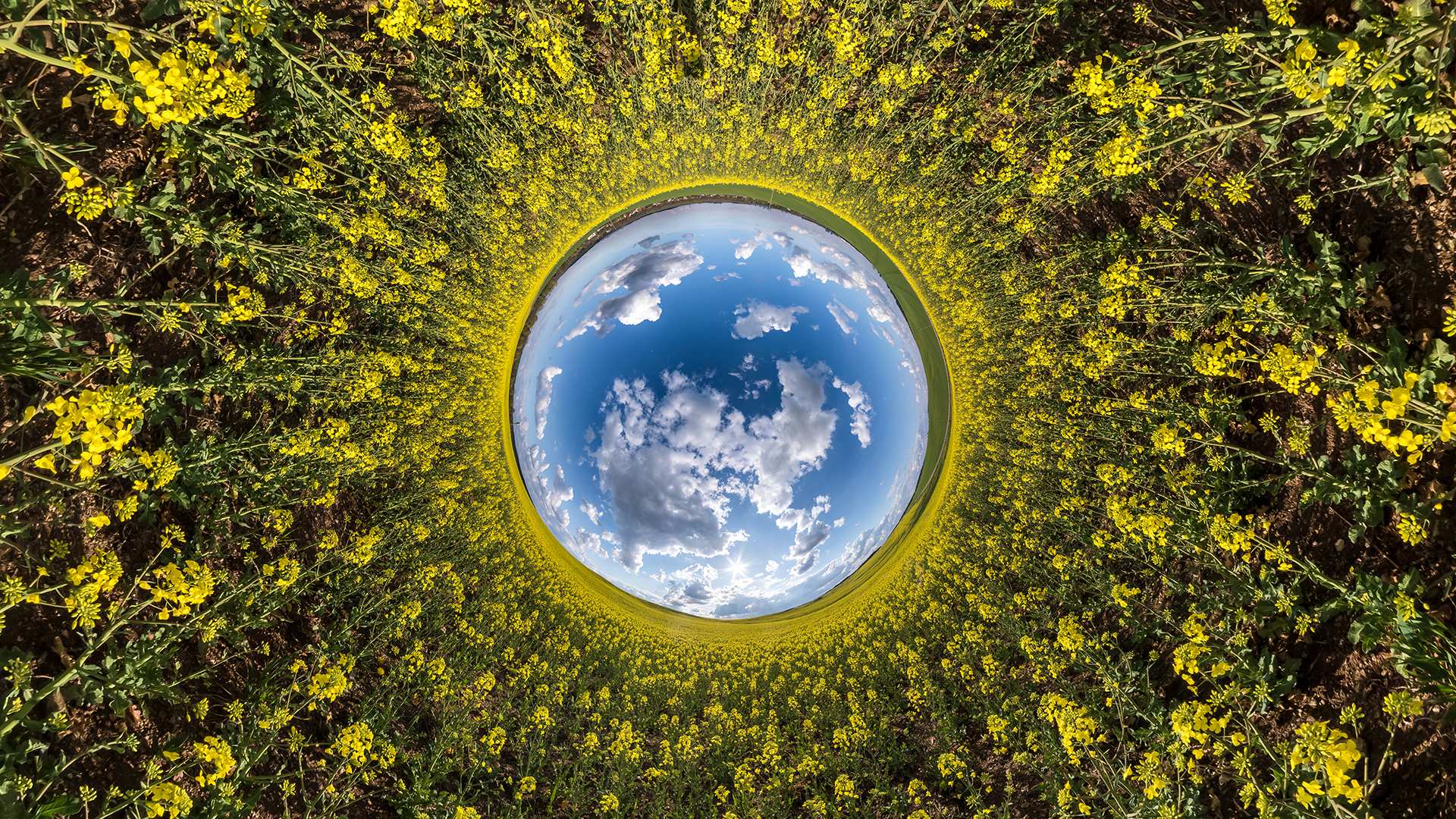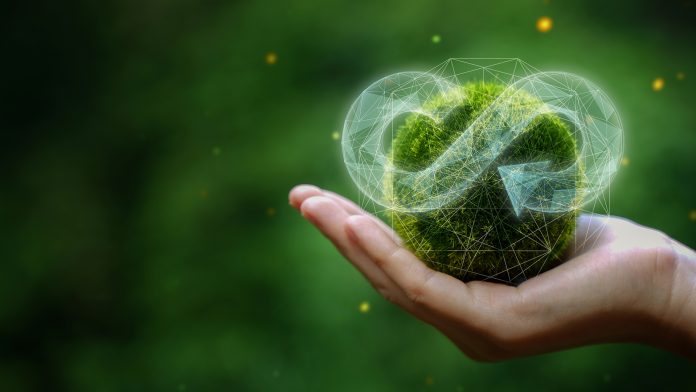John Bell, Director of Healthy Planet, DG Research & Innovation at the European Commission, discusses the strategies and initiatives in place to strengthen Europe’s bioeconomy.
The term ‘bioeconomy’ refers to activities that deal with renewable biological resources from land and sea, like crops, forests, fish, animals, and micro-organisms to produce food, materials, and energy. In a world where sustainability and the conservation of resources are more important than ever, the development of a strong bioeconomy is being prioritised in many regions across the globe. Europe, in particular, has implemented various strategies and initiatives in recent years to strengthen its bioeconomy to accelerate progress towards a circular and low-carbon economy.
Initially introduced in 2012, Europe’s Bioeconomy Strategy paved the way for a more innovative, resource-efficient, and competitive society that reconciles food security with the sustainable use of renewable resources for industrial purposes, while ensuring environmental protection. The Strategy was updated in 2018 to include actions to scale up and deploy locally the bioeconomy, capitalising on and going beyond the previous successful research and innovation (R&I) investments, in order to create growth and job opportunities at a local level, to reinforce the bio-based sector, and contribute to the modernisation of EU industry.
The Innovation Platform spoke to John Bell, Director of Healthy Planet, DG Research & Innovation at the European Commission, to learn more about Europe’s bioeconomy and the European Commission’s commitments to strengthen it.
Why is the bioeconomy important for the prosperity of Europe? How can it support the acceleration of the EU’s progress towards a circular and low-carbon economy?
We live in a time of multiple accelerating pressures on land – the Russian invasion in Ukraine, rising food and energy prices and paying back the debt of humankind to nature: such as biodiversity and carbon. Therefore, we need to look at the policies related to biological resources and their trade-offs holistically, since they are all very much intertwined. Here is where Europe’s bioeconomy policy enters the picture – it is our navigation system in an assembly of all policies that relate to biological resources, or the living nature and how we interact with it.
Europe’s bioeconomy encompasses all sectors and associated services and investments that produce, use, process, distribute or consume renewable biological resources from land and sea, including ecosystem services. We see it as a natural enabler and result of the European Green Deal transformation. The European Green Deal is a set of policy initiatives that aim to boost the efficient use of resources by moving to a clean, circular economy and stop climate change, revert biodiversity loss and cut pollution. Also, the European Commission’s Communication, ‘Clean Planet for all: EU Long-Term Climate Strategy’, from 2018 mentioned the bioeconomy as one of the seven strategic building blocks towards a net-zero greenhouse gas economy.
A circular and sustainable bioeconomy has the potential to contribute to the objectives of the European Green Deal by, for example, producing fossil-free materials for a climate-neutral future. For example, the carbon sequestration in soil, blue carbon and forests, and its storage in bio-based products, together with material substitution of fossil-based products (plastics, energy, textiles, chemicals), can generate significant carbon savings and contribute to -55% emission savings by 2030 agreed in the Fit for 55 package. What is important is that the bioeconomy policies contribute to all three dimensions of sustainability: the environment, economy, and society.
The circularity is at the core of Europe’s bioeconomy policy and of the concept of bioeconomy itself. This way, it will drive the renewal of our industries, where bio-based processes and products are circular-by-design and encourage responsible consumption, the modernisation of our primary production systems, the protection of the environment, and will enhance biodiversity. The circular bioeconomy also aims to add value to biological waste and residues. It can turn bio-waste, residues and discards into valuable resources and can create innovations and incentives to help retailers and consumers cut food waste. For example, innovating the way cities add value to their significant share of bio-waste is a tangible way to contribute to the greening of industries and the development of circular bioeconomies and products.
How is the European Commission working to scale up and strengthen Europe’s bioeconomy? What are its key initiatives in this area and how are they being implemented?
The sustainable and circular bioeconomy supports the modernisation and greening of the EU industrial base through the creation of new value chains with more resource-efficient, sustainable, and cost-effective industrial processes. The European industrial base can maintain and enhance its global leadership by capitalising on the power of innovation and scientific advances available, for instance, in life sciences and biotechnologies.
The EU’s Bioeconomy Strategy highlights the role of investments, innovation, supporting entrepreneurs and start-ups, and implementing systemic changes towards more sustainable futures. Concretely, this means translating opportunities from all types of innovation into new products and services on the market, creating jobs locally, and diversifying income sources.

The solid base layer of the innovations and businesses and successful development of the knowledge-based bioeconomy is research and strong knowhow. Overall, and beyond just bioeconomy, Horizon Europe dedicates €95.5bn to research and innovation over a period of seven years, of which around €9bn is foreseen for Cluster 6 on Food, Bioeconomy, Natural Resources, Agriculture and Environment.
The European Commission also commissioned a study on Bioeconomy Education in 2022, which highlights the need to advance the entrepreneurship skills and transversal, multi-disciplinary skills in bioeconomy. But we also need to move beyond research and innovation and have a strategic and systemic approach to the deployment of bioeconomy innovations to fully obtain the economic, social, and environmental benefits of the bioeconomy. Therefore, the European Commission is working on a Strategic Deployment Agenda for the bioeconomy.
The Bio-based Industries Joint Undertaking (BBI JU) has successfully mobilised private funding and is continued in its successor, Circular Biobased Europe Joint Undertaking (CBE). The BBI JU has attracted private investment of €2.73bn by 2024 and matched with €835m support by the EU. The new Circular Bio-based Europe (CBE) Partnership (2021-2031) receives €1bn EU contribution to further strengthen and scale up the EU bio-based sectors in all stages of the innovation cycle, to be coupled with at least the equal contribution by the private partner, the Bio-based Industry Consortium.
The Bioeconomy Progress Report shows that public involvement in R&I has shown good results so far, and it is clear that this should also be strengthened in the future. The highest substitution of fossil-based elements by bio-based inputs was recorded in bio-based solvents, bio-based polymers, biofuels, and agrochemicals. Biorefineries at scale have an important role in this sector. According to the EU Biorefinery Outlook to 2030, more than 300 chemical and material driven biorefineries are operational in the EU. Europe has a strong position in the global market for bio-based chemicals and materials in general. According to the Bioeconomy Strategy Progress Report, the bio-based industry has shown growth that is higher than the primary sectors.
It provides 7.84 million jobs with a €417bn value added. Also, food innovations are on the rise – the number of novel food applications are increasing and reaching markets in Europe. Bioeconomy innovations are the motor for change, and we need to unfold their potential in vibrant bioeconomy industry ecosystems.
What are the key challenges facing the plight to strengthen the bioeconomy? How can these be overcome?
The key challenges are also simply related to our major challenges – the sustainable supply of renewable biological resources. How can we guarantee that we increase the value added but not at the expense of environment and wellbeing? The Bioeconomy Progress Report also points out to these limitations: Europe’s bioeconomy is both about sustainable production but also sustainable consumption; we do not always have to produce more – but rather better, higher value-added, more circular and considering the cascading principle. A consumption-based framework needs to reach to the level of consumers as well – we collectively need to learn that the goal is not more but enough.
The second gap recognised in the Bioeconomy Progress Report mentioned above was how to resolve multiple pressures on land and sea. It requires resolving the trade-offs and assessing the integrated bioeconomy land and sea use. The Sustainable Carbon Cycles communication proposed an action on integrated bioeconomy land use assessment. Among other actions to support carbon farming, the Commission commits to promote and pilot blue carbon farming practices through some of the lighthouses of the Mission, ‘Restore our Ocean and Waters’.
Overall, the monitoring of the bioeconomy is key – we constantly work on developing the EU Bioeconomy Monitoring System to be able to detect the development of bioeconomy towards the goals of the Bioeconomy Strategy, and analyse, synthesise and disseminate available knowledge for the benefit of the European policy through the Knowledge Centre for Bioeconomy. When we look at the bioeconomy industry, we see good development gaps. Still, stronger leverage for bio-based materials and products must be created to enhance innovation and co-operation with private sector initiatives and stimulate start-up creation within industry ecosystems. Building on the experience of the European Circular Bioeconomy Fund, further investments – public and private – are needed to overcome the particularly large ‘Valley of Death’ in bioeconomy innovations, caused by a lack of financing to transfer knowledge into innovations and the lack of a long-term policy pull.
One of the results of the EU Bioeconomy Conference 2022 discussions was that breakthrough innovations require mobilising investments, including risk finance through the deployment of new financial instruments, to strengthen and upscale existing and new technologies and support the creation of markets for more sustainable and circular bioeconomy products and processes. The discussion at the 2022 Bioeconomy Conference also highlighted the need to mainstream the bioeconomy through several funding instruments: Member State representatives confirmed that increased investments into the deployment of regional and local innovative bioeconomy solutions in Central and Eastern Europe should be mainstreamed across several EU funding instruments.
What policies need to be addressed to further support the acceleration of Europe’s bioeconomy?
Despite successful developments, there are still several gaps in Europe’s bioeconomy. It is simply not one policy area that would need to be addressed but rather we come to the core of the bioeconomy – it is the policy coherence that would be needed.
For example, the Bioeconomy Conference clearly emphasised the need for coherence of the EU’s regulatory framework. Several industry representatives pointed out that the current EC regulatory framework limits the further scaling of bio-based industries and creates several barriers for European companies compared to their competitors from Asia, and North and Latin America.
The next steps of the EU Bioeconomy Policy are yet to be defined. But the Bioeconomy builds on the fact that different countries, micro- and macro-regions, have different profiles and bioeconomies and play a strong role in a well-functioning EU bioeconomy. The key enablers of it are research, innovation, education, and investments.
All in all, it is important now to scale up Europe’s bioeconomy to bring it from niche to the norm. And do it in a way that no person or area is left behind.
Please note, this article will also appear in the fourteenth edition of our quarterly publication.







